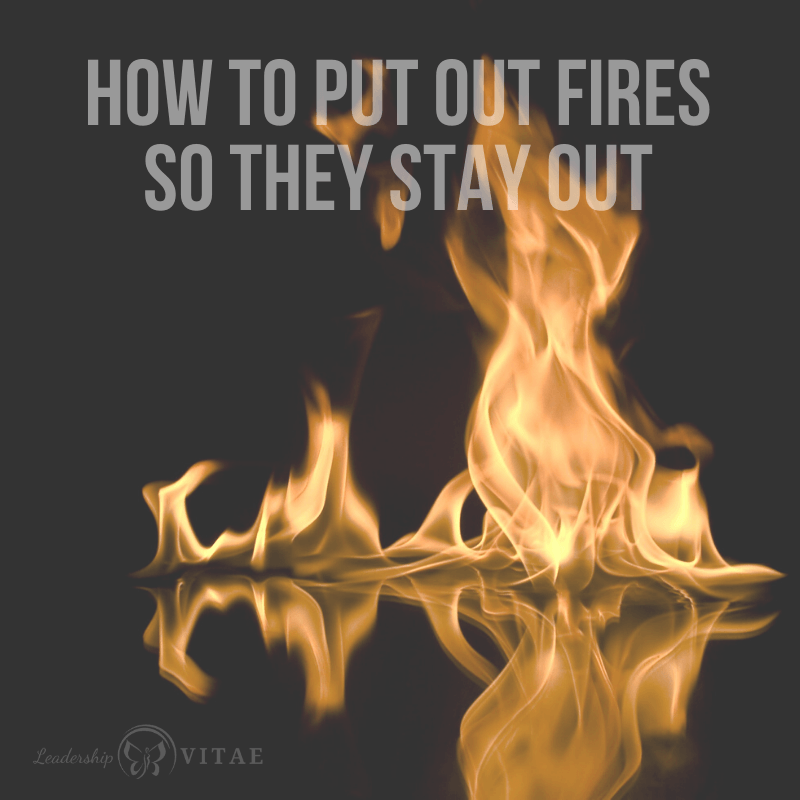
Anyone else find themselves caught up in endless meetings, with a growing backlog and hundreds of unread emails? Just me? I doubt it.
We’ve all had times when we’re faced with a growing list of to do’s with less time in the day than we need to accomplish them. It can make us feel overwhelmed, impatient, and quick to close an item so we can move on to the next.
It’s a fast path to frustration, for ourselves and those around us. It’s also a sure way to ensure the fires we put out today pop up again tomorrow.
The endless hamster wheel
The faster we are to clear something from our queue, the less likely we are to seek the input of others. We may check the box and ask another opinion or two. The unfortunate reality, however, is that we are likely not doing justice to that input.
When we are short for time, and patience, we may not be truly connecting with others. Those we need to make sure we’re headed down a good path. Seeing roadblocks before we run into them headfirst. Which creates more frustration for us, and those that are trying to help us prevent a catastrophe in the first place.
The less time we spent trying to prevent fires, the more fires erupt. The more fires that erupt, the more fires we are fighting and the less time we put towards prevention. It is a vicious cycle.
Breaking the cycle
For one day, one fire, one issue, we have to say “enough is enough.” Quoting Einstein, the definition of insanity is trying the same thing over and over again, expecting different results. If we want to break the cycle of firefighting, we have to try something different. Even if it feels uncomfortable.
In the next meeting, the next email, the next reactive fire you’re facing, you have an opportunity to try something different.
Pause. Take a deep breath. Open yourself up to different perspectives. Remind yourself that you always have the time to do something over or react when the next fire blows up. Instead, take this time to try and prevent the next fire. To get to a better outcome that doesn’t just kick the can down the street.
Welcome diversity of thought
Before you begin, ask yourself – who is at the table when I’m looking for input? Do I regularly ask the same people? Are they ones that challenge me or tell me what I want to hear?
It might be time to look around the table and make sure it represents diversity of thought.
We hear regularly that diversity results in better outcomes. By bringing in others with different backgrounds, experiences, etc we are less likely to have homogenous thinking. If we all share the same perspective, we’re potentially missing something.
Don’t just respect that someone else has a different way of thinking, or a different perspective – welcome it, encourage it, and seek it out.
Watch out for potential pitfalls
Gathering input – real input – from others takes time and effort. Time and effort we often feel like we don’t have. If we are not careful, we can stifle the very input we want and need to ensure we’re not fighting the same fire again shortly.
There are three things to remember as we ask for input. They will help us not only make sure we’re considering multiple perspectives, but staying open and connected with those we’re looking to engage.
1. Keep your “Truth” in Check
Your truth isn’t the truth. We each come to the table with our own lens, shaped by education, experience, culture, and what’s been historically modeled and rewarded. Your perceived train wreck is someone else’s opportunity to grow and learn.
Truth is in the eye of the beholder and is not universal to everyone at the table. Pause before dismissing an idea or thought just because it doesn’t align to what you believe to be true.
2. Find the Good
There are no bad ideas. There is always something that can be learned from a different perspective.
It may be that a suggestion cannot be implemented exactly as it was presented, but what can be considered? What other questions might that idea prompt? Maybe it is a good idea that’s ahead of its time. What would it take to be ready for it?
3. Keep it professional
Sometimes, it may seem like an idea is completely “out there” or that another person just “doesn’t get it.” That’s your perspective and doesn’t make it reality. Someone else may have different experiences, but that does not make them crazy or stupid.
Demeaning or diminishing someone else’s feedback, ideas, experience or words can shut them down and make them less likely to contribute in the future. You never know when that idea you think is crazy is exactly what your team or company needs.

A new day with fewer fires
It may feel like we have no time to step back, take a breath, and meaningfully engage others. However, if we take these steps and model them for others, we can and will get time back.
These steps give us the opportunity to address root cause of problems instead of symptoms, resulting in fewer fires. We begin to empower others with different ideas, who are more likely to bring up creative solutions that create better outcomes.
We may be in our current role because experience shows that we’re good under pressure and fighting those fires. Often, firefighting is rewarded in organizations because fires are visible challenges. Fire prevention may not get as much press, but ultimately it’s a more valuable skill that leaders should embrace, model, and reward.








